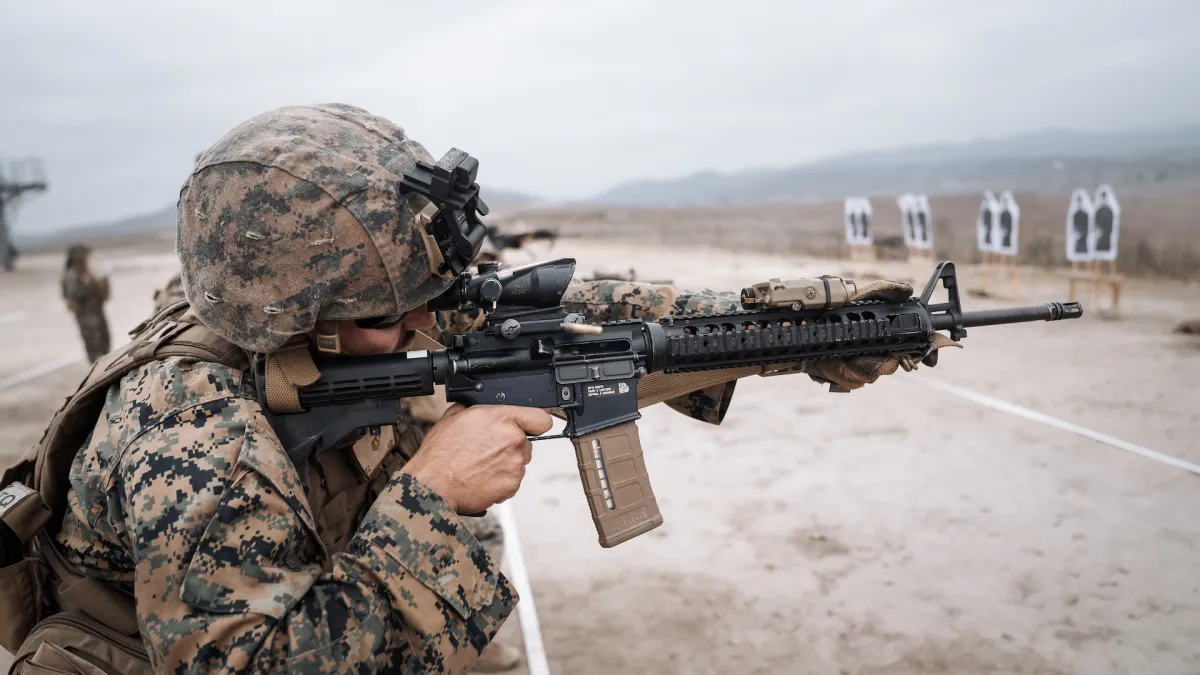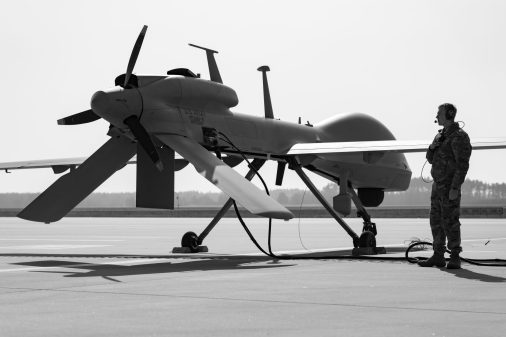Marines on the hunt for rifle-mounted jammers to defeat enemy drones

The Marine Corps sent a sources-sought notice to industry Monday as it looks for solutions to meet an “emerging urgent requirement” for new tools to help dismounted troops fend off small enemy drones.
Vendors with mature capabilities that seem promising may be invited to an industry day in September at Twentynine Palms, California, to see how their systems perform against live targets, according to the RFI.
The service is looking for new technologies to help “every” Marine defend against unmanned aerial systems. At the squad level, that includes a “non-kinetic” capability with a directional radio frequency and/or GPS jammer, “ideally able to mount on organic rifle,” per the RFI. At the platoon level, the Corps is eyeing omni-directional jammers and spoofers.
For “kinetic” solutions, the service is interested in a rifle/rifle optic that can track and shoot down Group 1 and Group 2 unmanned aerial systems — which are categories of drones that are on the small end of the spectrum — with “enhanced ammunition” for existing firearms.
Marines also need sensors that alert them to adversaries’ UAS. That’s why the Corps wants a passive detection system that uses acoustic or RF detection.
“Sensor should be body worn with limited impact on primary mission equipment. Components may include a Handheld tablet, bracelet, earpiece, and/or glasses that receives alerts, warnings, notifications from an external sensor(s) (i.e. radars and/or passive detection systems),” per the RFI.
Some of the platoon-level solutions, such as passive-detection systems, may be vehicle, mast or tripod-mounted, the document noted.
Industry responses are due Aug. 2.
The call for white papers comes amid increasing concerns about the vulnerability of U.S. troops to drone attacks and UAS surveillance. Pentagon officials are taking lessons from what’s transpiring in the Ukraine-Russia war and other conflict zones as well as their own exercises.
“Every unit down to the individual Marine, regardless of geographic location on the battlefield, is vulnerable” to small unmanned aerial systems, the RFI stated. “To facilitate freedom of movement, Marines require the ability to conduct self-defense against the threat. This has been proven through multiple Department of Defense (DoD) experiments, training exercises, and has been proven during real-world operations.”
The release of the RFI is the latest move in the Corps’ push to beef up its counter-drone capabilities.
“Five years ago, the Marine Corps really just had Stinger [man-portable air defense systems]. That was it. Now, we’re on the cusp of deploying a whole suite of systems to counter UAS in a way that can be rapidly upgraded … to accommodate the new threats,” Steve Bowdren, head of the service’s program executive office for land systems, told reporters at the Modern Day Marine conference in April.
The service has also set up a new “fusion center” at its base in Quantico, Virginia, which will initially focus on counter-unmanned aerial systems capabilities.
“We know that that is a big, big part of the future,” Brig. Gen. Stephen Lightfoot, director of the Marine Corps Capabilities Development Directorate, told reporters at the conference. “If there’s any part of … I would say changing character of war, small UAS and counter UAS are probably the biggest change that we’re seeing.”
He pointed to some of the specific use cases in recent conflicts.
“When you look at what’s going on in Ukraine and Russia and just the amount of small UAS first-person-view drones. And then looking at some of the commercial off-the-shelf technology, like cellphones that are being used to cue, using audio to be able to cue to come in. And there’s a lot of counter-to-counters going on over there. And the longer it takes us to get to it … we’re going to get farther and farther behind,” he said.






